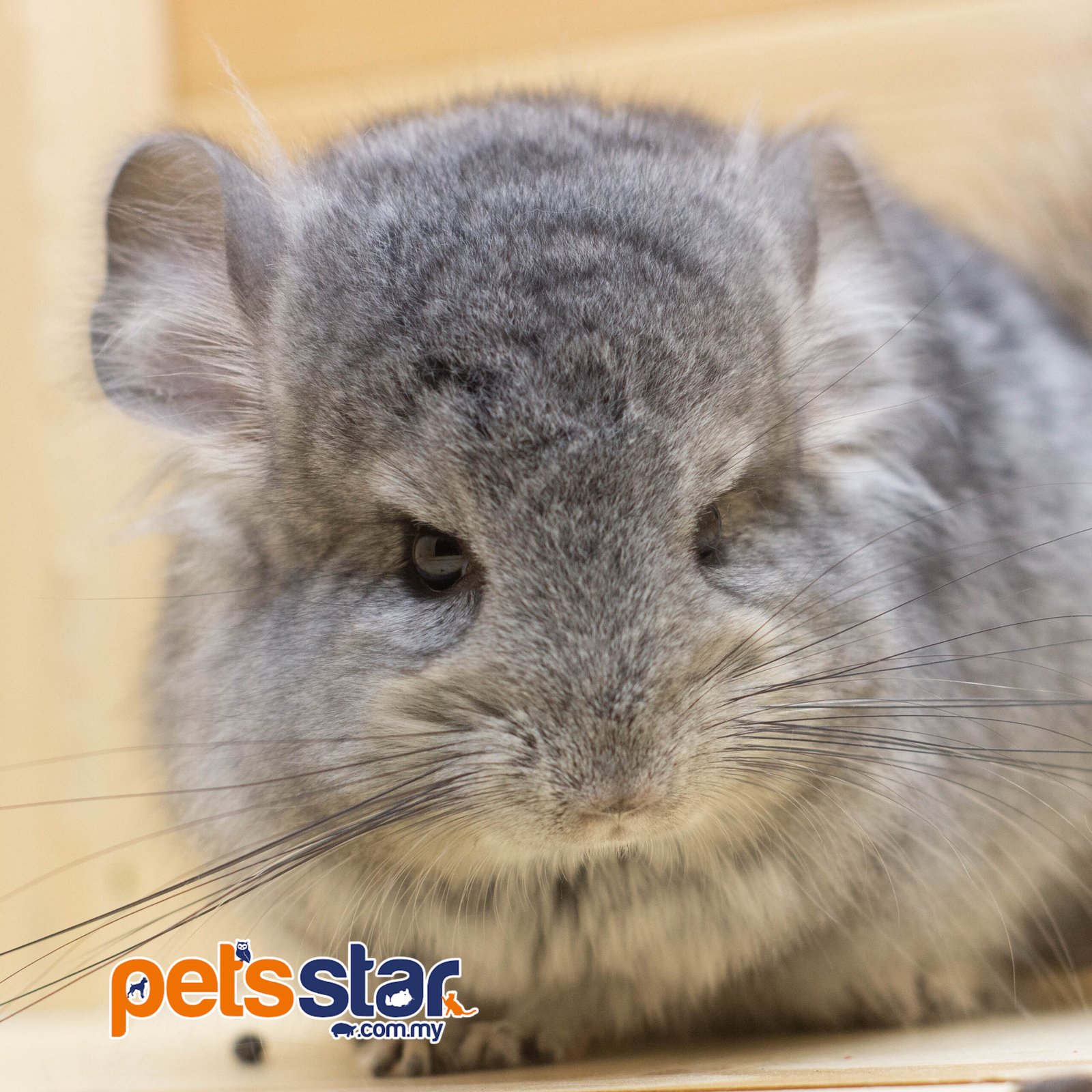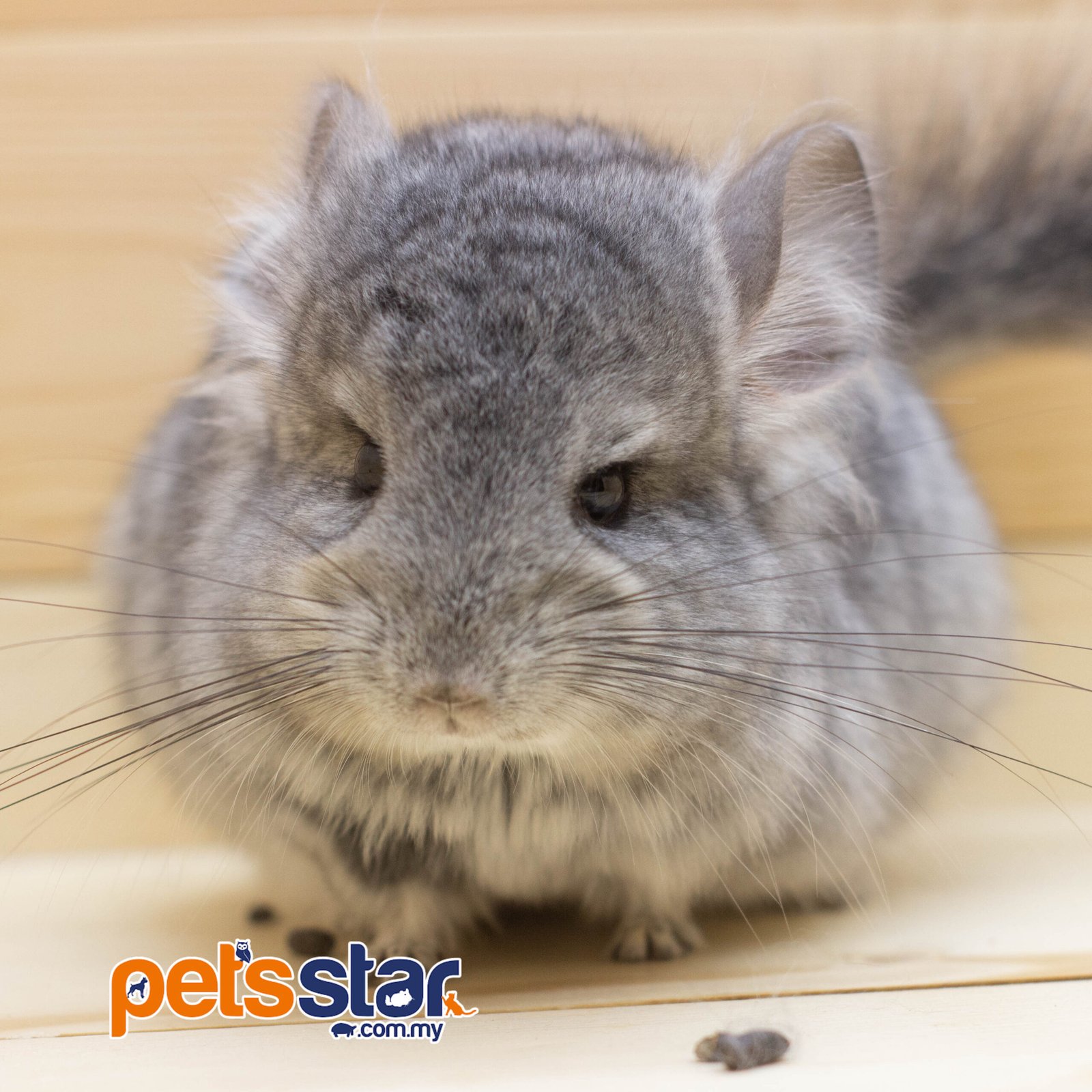





Colour : Standard Gray
Standard gray is the original color of my Neighbor Totoro with gray fur, white belly, all black eyes and ears. Gray is the dominant gene.
Royal Persian Anggorra Chinchilla Standard Grey
A chinchilla is a rodent with extremely dense, beautiful soft fur. They are intelligent, active creatures with big personalities. They originate from the top of the Andes in South America, where it is cold and arid. They are crepuscular (not nocturnal) which means they are most active at dusk and dawn.
Life span: average 13 – 15 years (Proper care)
Origin :Chile and Peru
Weight : 500g to 600 g
Temperature : below 27 c
A chew proof cage at least 45 x 60 x 60 H (cm)is the minimum size for one chinchilla. You should get the biggest cage possible so your pet has lots of room to sleep, play, and move around. Chinchillas should not be housed in tall cages without separate floors, there should be a maximum of 60cm or 2 feet between floors and even less with young kits present. Having multiple shelves and/or hammocks in a tall cage will not protect them from injury
There should be no plastic or rubber in the cage since this can lead to a blockage of the intestines, which is almost always fatal. Cages are best made from strong ¾ inch metal wire mesh with a pull-out tray underneath on which dropping can collect.
Chinchillas would appreciate access to wooden shelves, wooden houses etc. but these should be made out of suitable untreated wood (e.g. pine). Shelves and houses made out of wood-based products such as plywood and MDF are not suitable because they contain glue and inevitably, they will be chewed. The chinchilla’s teeth grow continuously throughout its life. Therefore, they need a constant supply of safe materials to gnaw on(e.g. 100% natural Chewing Stone , Apple Stick or Kiwi Stick).
healthy adult chinchillas can tolerate cold (anything above freezing point), the enemies being heat and damp. Inevitably, they struggle in temperatures above c.28°C. To prevent overheating, direct sunshine (including through windows) should always be avoided and they should never be housed outdoors or put in a run in the garden. Fans, stainless steel cooling house and cooling tiles can be used to help keep them comfortable. Living in a damp environment can not only lead to respiratory problems, but it also affects the fur which impacts on their ability to stay warm.
Although it is not essential for a chinchilla to have “playtime” outside of their cage, if you choose to do so, they need to be fully supervised at all times since they will chew wires, skirting boards etc. Care should also be taken to ensure they do not overheat as a result of over vigorous exercise, especially in hot weather. In general, they are not afraid of other animals and pets, however, caution needs to be exercised since some species can pass on diseases to chinchillas. Currently there are no commercially available vaccinations developed for chinchillas.
With air conditioning : Chinchillas have beautiful fur ,Air conditioners work by removing the heat from the inside of your home and transferring it outdoors .temperature control at your fingertips
Without air conditioning: Need to make sure room temperature is below 27c
Chinchillas have specific nutritional requirements and their diet should consist of a good quality meadow or timothy hay, fresh clean water and a quality with variety ingredient chinchilla diet which meets their raw fiber and vitamin needs. Chinchillas rarely over eat, so food and water should be available at all times. However, food bowls and hay racks should not just be continuously topped up, Lack of appetite is often one of the first signs of a health issue. Foods high in sugar ,pesticide and color additive , those sold for chinchillas, should always be avoided. These are likely to lead to selective feeding (i.e. they pick out their favourite bits), which more often than not, will result in an inadequate diet and health issues.
Feeding good hay, as well as providing important fibre in their diet, also helps wear down the teeth. The teeth of a healthy adult chinchilla are deep yellow/orange in colour, creamy/white teeth are an indication of poor diet or other issues (although this is a fairly common temporary condition in heavily pregnant/lactating females). since pellets and hay can become stale/damp/contaminated and it is important to be able to monitor how much the animal is eating.
Chinchillas should not be fed fresh vegetables, fruits, seeds or nuts. Their natural environment is relatively barren and their digestive system is unable to cope with such “rich” foods. Commercial sugary treats should also be avoided for the same reason. All treats should be limited. The chinchilla’s digestive system is not robust and any mouldy, contaminated or unsuitable food can lead to serious health issues and even death. Incorrect diet and housing are two major causes of health problems in pet chinchillas. To avoid sudden changes in diet as this could upset their digestive system and make them very ill.
Chinchillas should have access to a dust bath with special chinchilla dust, preferably for 10 to 15 minutes 2 to 3 times a week. This dust can be sieved to remove any droppings. Having regular dust baths helps keep the fur clean and help them to release stress their stress. Chinchillas should never take a water bath. Chinchillas can’t dry themselves quickly or adequately as we have discussed thus far. A water bath runs the risk of your chinchilla getting fungal infections, respiratory infections, and makes your chinchilla extremely uncomfortable.